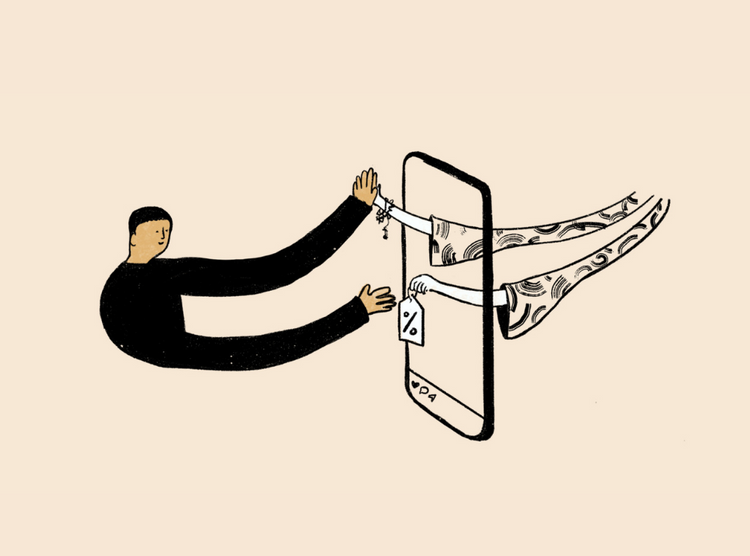An Introduction to Parasocial Relationships on Instagram

Social media has transformed how we connect with others. Instagram, in particular, has created new dynamics in human relationships. For example, one phenomenon that stands out is parasocial relationships on Instagram. These one-sided connections shape how millions of users interact with influencers, celebrities, and content creators daily.
Understanding parasocial relationships matters now more than ever. Instagram users spend hours consuming content from their favorite personalities. They feel close to people they’ve never met. In addition, they invest emotionally in lives they only see through screens. This dynamic raises important questions about modern connection and mental health.
This article explores what parasocial relationships are. It examines how they manifest on Instagram and discusses their psychological effects. In addition, it offers guidance for navigating these unique digital connections healthily.
Understanding Parasocial Relationships on Social Media
Parasocial relationships aren’t new to the digital age. Researchers Donald Horton and Richard Wohl first identified them in 1956. They studied how television audiences formed bonds with on-screen personalities. Viewers felt like they knew celebrities personally. However, these celebrities had no awareness of individual viewers.
The concept describes a one-sided relationship. One person invests emotional energy and attention. Contrarily, the other person remains unaware of the individual’s existence. Traditional media created these dynamics through television, radio, and print. Audiences connected with news anchors, actors, and talk show hosts. They felt genuine affection despite the relationship’s asymmetrical nature.
Social media has intensified these connections dramatically. Instagram creates an illusion of intimacy and accessibility. For example, users see behind-the-scenes content, personal stories, and daily routines. Influencers respond to some comments and messages. This occasional interaction strengthens the perception of mutual connection. However, the fundamental imbalance remains unchanged.
The Psychology Behind Parasocial Relationships on Instagram
Our brains aren’t designed to distinguish between real and parasocial connections. When we regularly consume someone’s content, our minds process them as familiar. As a result, we develop genuine feelings of friendship or admiration. Neural pathways activate similarly whether someone is physically present or on screen.
Instagram’s design amplifies these psychological responses. For instance, the platform encourages daily engagement through Stories, posts, and Reels. As a result, users wake up and check their favorite creators’ updates. Then, they go to sleep scrolling through feeds. This constant exposure mirrors the frequency of real-world friendships. The brain registers this consistency as meaningful connection.
Parasocial relationships fulfill real psychological needs. They provide companionship for lonely individuals and offer inspiration and motivation. In addition, they create feelings of belonging to communities. For many users, these connections serve important emotional functions. They’re not inherently unhealthy or problematic. However, understanding their nature helps maintain realistic expectations.
How Instagram Facilitates Parasocial Relationships
Instagram’s features are uniquely suited to fostering parasocial bonds. For example, Stories offer glimpses into daily life that feel personal. In addition, direct messages create the possibility of interaction. Further, live videos enable real-time communication. These tools blur boundaries between public personas and private individuals.
The algorithm reinforces these connections through repeated exposure. When you engage with a creator’s content, Instagram shows you more. You see their posts first in your feed. Their Stories appear at the front of your Story bar. This prioritization creates a sense of closeness and importance. It signals to your brain that this person matters.
Content creators intentionally cultivate parasocial relationships on Instagram. They share vulnerable moments and personal struggles and use inclusive language like “we” and “us.” They ask questions and encourage comments. These strategies are part of building engaged audiences. They work because they tap into fundamental human desires for connection.
Impact on Mental Health
Parasocial relationships can positively affect mental health in several ways. They reduce feelings of isolation. They provide role models and inspiration and connect people with similar interests or experiences. Many users find genuine comfort in following creators who understand their challenges.
However, these connections also carry potential risks. Users may develop unrealistic expectations about relationships. They might compare their lives unfavorably to curated online personas. They could invest emotional energy in one-sided connections instead of reciprocal friendships. The balance between benefit and harm depends on awareness and boundaries.
Research shows that excessive parasocial investment correlates with loneliness. People who struggle with real-world connections sometimes over-invest in digital ones. This creates a cycle where parasocial relationships substitute for reciprocal bonds. Breaking this pattern requires conscious effort. It involves recognizing when digital connections prevent real-world relationship building.
Recognizing Parasocial Relationships
Identifying parasocial relationships on Instagram starts with honest self-reflection. Ask yourself how much time you spend following certain creators. Consider whether you think about them when not on the platform. Notice if you feel personally affected by their successes or failures.
Common signs include feeling like you know someone intimately. You might share their content with friends as though discussing a mutual acquaintance. On the other hand, you could feel hurt when they don’t respond to comments. You might defend them online against criticism. These behaviors indicate emotional investment in a one-sided relationship.
Another indicator is how these relationships affect your mood and self-perception. Do you feel worse about yourself after viewing certain content? Further, do you experience jealousy or inadequacy? Do you prioritize checking updates over other activities? These patterns suggest the relationship may need reassessment. Awareness is the first step toward healthier engagement.
Impact on Self-Esteem
Instagram’s curated nature makes it particularly challenging for self-esteem. Users see highlight reels of others’ lives. Influencers post polished, edited content. This creates unrealistic standards for comparison. When combined with parasocial relationships, the effect intensifies.
People in parasocial relationships often idealize the object of their attention. They see creators as perfect or having enviable lives. This idealization sets impossible standards for their own experiences. Users may feel their lives are boring or insufficient. Their accomplishments seem small compared to those they follow.
The constant comparison erodes self-worth over time. Research links heavy Instagram use to decreased life satisfaction. When users feel personally connected to influencers, the comparison becomes more painful. It feels like measuring yourself against friends rather than strangers. Setting boundaries and diversifying social connections helps counteract these effects.
Impact on Content Creators
Creators experience the flip side of parasocial dynamics. They interact with thousands who feel personally connected. Managing these expectations creates unique pressures. They must maintain engagement while setting appropriate boundaries.
Many creators struggle with the emotional labor involved. Followers share deeply personal problems and expect responses. They become upset when creators take breaks. They feel entitled to information about private matters. This dynamic can lead to burnout and resentment.
Some influencers develop anxiety about disappointing their audience. They feel obligated to share constantly. They worry about losing relevance if they step back. The pressure to maintain parasocial relationships on Instagram affects their mental health. Many have spoken publicly about these challenges. Their experiences remind us that both sides of these relationships are human.
The Commercial Aspect of Parasocial Relationships on Social Media
Brands leverage parasocial relationships for marketing purposes. Influencer marketing relies on the trust and connection followers feel. When someone you feel close to recommends a product, it carries weight. This makes parasocial relationships incredibly valuable commercially.
The monetization of these relationships raises ethical questions. Are creators exploiting emotional connections for profit? Should there be more transparency about sponsored content? These debates continue as influencer culture evolves. Users should approach recommendations with healthy skepticism regardless of how connected they feel.
Understanding the business side helps maintain perspective. Content creators often share personal details strategically. Their authenticity, while genuine, serves professional purposes. Recognizing this doesn’t diminish the value of their content. It simply clarifies the relationship’s nature. This awareness helps users make informed decisions about engagement and purchases.
Healthy Boundaries
Setting boundaries starts with limiting time on the platform. Use Instagram’s built-in tools to monitor daily usage. Set specific times for checking the app. Avoid mindless scrolling during vulnerable moments. These practices reduce overinvestment in parasocial connections.
Diversify your social media consumption across multiple creators. Follow accounts that serve different purposes: education, entertainment, inspiration. This prevents over-attachment to any single personality. It also provides varied perspectives and reduces comparison.
Cultivate real-world relationships alongside digital ones. Prioritize face-to-face interactions with friends and family. Join local groups or activities that interest you. Balance parasocial connections with reciprocal relationships. This ensures your social needs are met through varied sources. It prevents parasocial relationships from substituting for genuine connection.
It’s also important for content creators and influencers to use caution regarding meeting followers in real life. There can be benefits, but there are also risks. Think carefully before deciding to meet followers face-to-face and take reasonable precautions.
Impact on Young People
Teenagers and young adults are particularly vulnerable to parasocial dynamics. They’re still developing identity and social skills. They spend significant time on Instagram. They’re more susceptible to influence from those they admire.
Young people may struggle to distinguish parasocial from real relationships. They might prioritize online connections over in-person friendships. They could model behavior or values from influencers without critical evaluation. Parents and educators should discuss these dynamics openly.
However, parasocial relationships can also benefit young people positively. They provide role models and communities. They expose youth to diverse perspectives and experiences and can inspire creativity and ambition. The key is teaching media literacy and critical thinking. Young people need tools to engage thoughtfully with social media.
Moving Forward: Navigating Parasocial Relationships on Instagram Mindfully
Parasocial relationships on Instagram aren’t inherently good or bad. They’re a natural response to media consumption. The challenge lies in maintaining awareness and balance. Recognize these connections for what they are: one-sided but potentially meaningful.
Enjoy the content you consume without guilt. Follow creators who bring value to your life. Appreciate their work while maintaining perspective. Remember that you’re seeing curated highlights. Allow yourself to be inspired without falling into comparison traps.
Regular self-assessment helps maintain healthy patterns. Check in with yourself about your Instagram habits. Notice how different accounts affect your mood. Adjust your following list accordingly. Unfollow accounts that consistently make you feel worse. Curate a feed that supports your wellbeing.
Conclusion
Parasocial relationships on Instagram represent a defining feature of modern digital life. They offer connection, entertainment, and inspiration. They also present challenges to mental health and self-perception. Understanding these dynamics empowers users to engage more consciously.
The impact of parasocial relationships depends largely on awareness and boundaries. When approached mindfully, they can enrich our lives. When left unexamined, they can distort our perceptions and priorities. The responsibility lies with users to maintain healthy relationships with social media.
As Instagram and social media continue evolving, parasocial dynamics will likely intensify. New features will create even more intimate connections. Accordingly, being informed about these relationships helps us navigate them successfully. We can enjoy the benefits while avoiding the pitfalls. Ultimately, the goal is balance: appreciating digital connections while prioritizing reciprocal, real-world relationships that truly sustain us.
VerifiedBlu is a great resource for growing your Instagram followers organically and authentically. Contact us to talk about how we can help.



